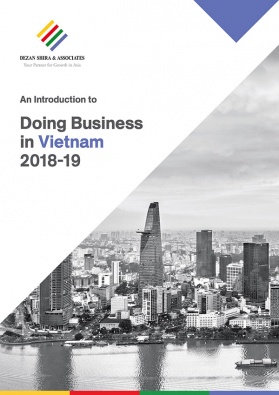Privatization of Vietnam’s Port Infrastructure to Boost Efficiency and Lower Prices
Vietnam’s Ministry of Transport has indicated that it wants to attract more private sector investment in order to build new seaports for the country. Deputy Chief of the Vietnam Maritime Administration, Do Duc Tien, has stated that the Vietnam Maritime Administration will announce a list of 42 projects related to maritime infrastructure, including 19 seaports that are looking for private investment.
The quality of Vietnam’s port infrastructure is currently ranked 88 out of 144 countries according to the 2015 Global Economic Competitiveness Report; it is hoped that privatization can boost the performance of the country’s ports.
Minister of Transport, Dinh La Thang, continued on the same theme, “The [Vietnam] government will only invest in projects that play a role in national defense and security”. He added that the planned Lach Huyen deep-water port in the northern city of Hai Phong would be the last maritime project to be state-funded, although even this project has been partly funded by low-interest Japanese loans.
The privatization of Vietnam’s ports is part of a strategy, begun in April 2014, by the Vietnamese government to privatize an estimated 432 state-owned enterprises (SOEs) during 2014-15.
An example of a potential candidate for privatization can be seen in the proposal by state-owned shipping giant Vinalines (Vietnam National Shipping Lines) to sell all of their shares in the Quang Ninh Port, instead of its earlier plan to do a partial divestment of 35-49 percent of their shares.
SOEs continue to struggle
SOEs in Vietnam have performed poorly over the last few years with many instances of mismanagement and corruption. For example, Vinalines reported US$76.4 million in losses in 2014 and US$330.95 million in 2013.
In fact, it has never made a profit from its shipping fleet, which is mostly secondhand. Corruption has also been a problem, with Vinalines’ ex-Chairman Duong Chi Dung and former general director Mai Van Phuc given death sentences for embezzlement of company funds in May 2014.
Mismanagement has also contributed to a bevy of problems with the country’s port infrastructure including too many smaller ports and too few deep-water ports. This has led most seaborne exports from Vietnam to Europe and the U.S. to be transshipped from Singapore, Hong Kong, Malaysia, or Taiwan.
Exports are first sent in small shipments from Vietnamese ports before then being compiled into larger shipments on bigger ships in the foreign deep-water ports.
It is also very costly to export from Vietnam due to the poor economies of scale that arise when shipping from smaller ports. According to the World Bank, it cost US$610 per container to export from Vietnam in 2014 as opposed to US$460 per container in Singapore, US$590 in Hong Kong, and US$525 in Malaysia.
Cai Mep and Lach Huyen deep-water ports
Vietnam currently has only one deep-water port, the Cai Mep International Terminal, however, this has struggled operationally since opening in 2009. Part of the reason for its struggles is the result of the excessive number of small ports in the country, which are siphoning off business from the larger port.
Cai Mep has seven terminals but currently is only running at 30 percent capacity. In reaction to these problems, the Ministry of Transport has set a two-year minimum handling rate of US$46 per twenty-food equivalent unit (TEU), the minimum rate will remain in place that until August 2015.
Despite the poor performance of Cai Mep, Vietnam is moving ahead with the construction of its second deep-water port, the Lach Huyen Port, which opens in 2016. In order to be successful, the Lach Huyen and Cai Mep ports will need to convince exporters that sending larger shipments will be more cost-effective than the small shipments currently sent from Vietnam.
The privatization of these and future ports could be a boon for companies sourcing from Vietnam because more efficient management should make it easier to ship directly from Vietnam instead of the extra cost associated with using Singapore or Hong Kong as intermediary ports.
The privatization also shows that the Vietnamese government is serious about using the private sector and market competition in order to create a more investor friendly environment.
About Us
Vietnam Briefing is produced by Dezan Shira & Associates. The firm assists foreign investors throughout Asia from offices across the world, including in Hanoi and Ho Chi Minh City. Readers may write to vietnam@dezshira.com for more support on doing business in Vietnam.
- Previous Article Vietnam’s Trade Position in Asia in 2015
- Next Article Survey Reveals Japanese Investor Confidence in Future of Vietnam





























